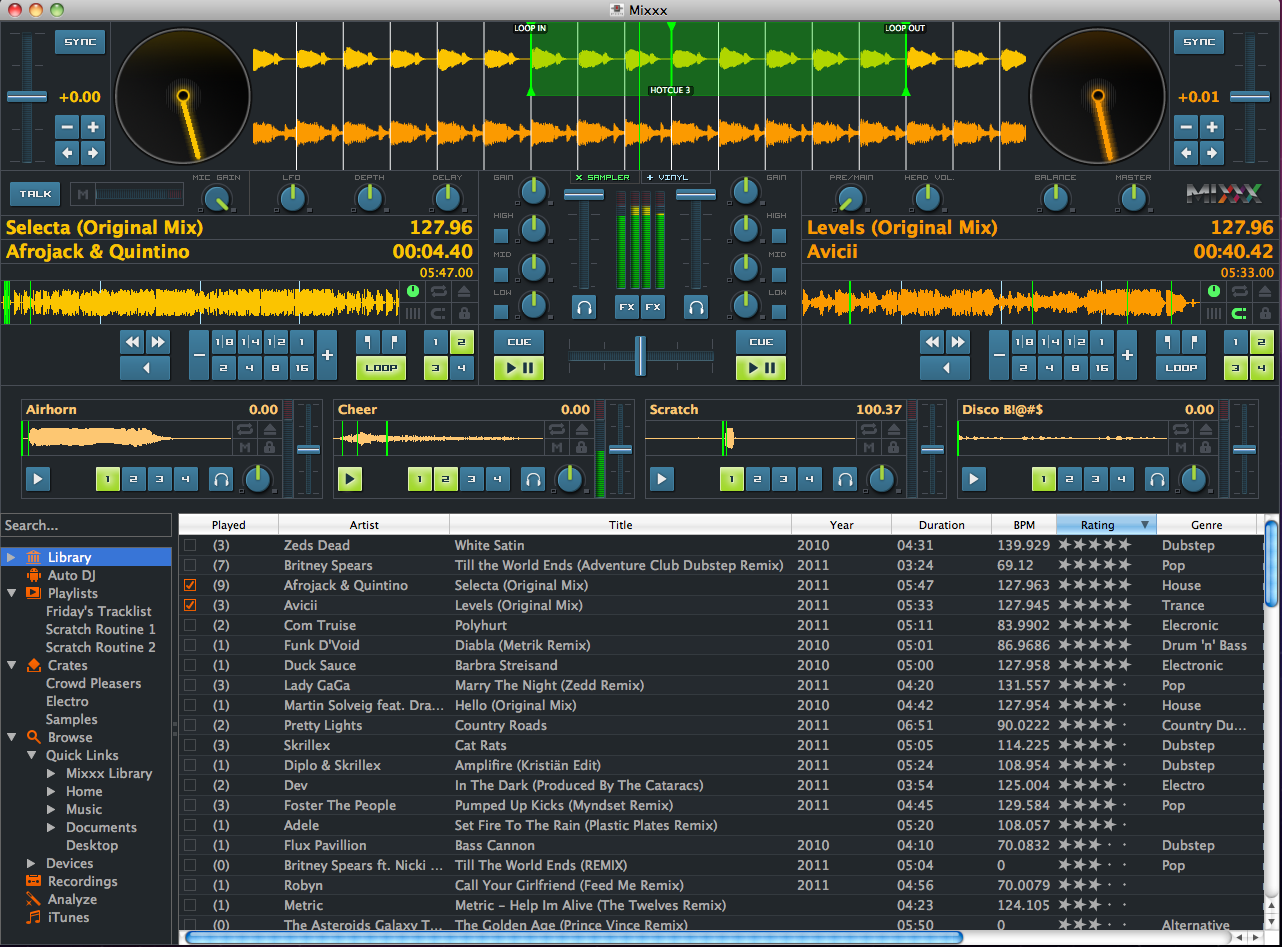Ddj 400 Mixxx
Description
19 December, 2019 Take our support survey for DDJ-400. Do you own a DDJ-400? Give us your feedback via the link below to receive free audio samples.
DDJ-SB3 Headphone mix button Hi, I am considering buying a DDJ-SB3, but comparing it to the SB2, I do not see the headphone mix button allowing to hear through the headphones the music that is playing to a certain volume with the music I am trying to mix in, also to a certain volume. Jun 26, 2018 Hi, I am considering buying a DDJ-SB3, but comparing it to the SB2, I do not see the headphone mix button allowing to hear through the headphones the music that is playing to a certain volume with the music I am trying to mix in, also to a certain volume.
This is my attempt at mapping the Pioneer DDJ-SR for Mixxx.
Aug 20, 2018 After more than two years of hard work, we are pleased to announce the release of Mixxx 2.1.0! Since Mixxx 2.0, we have overhauled the effects system, redesigned the skins, added and improved lots of controller mappings, rewrote the audio file decoders twice, and of course fixed a bunch of bugs. Feb 19, 2014 So here's the thing. I love (electronic) music, it's one of the few things that I'm somewhat able to enjoy despite my chronic depression. I also discovered DJing a year ago and got myself a DDJ-400 because of this, since I find the idea of mixing the songs I love for a crowd that shares my sentiment towards them liberating and fulfilling.
This was originally written for Mixxx v1.11.0, but I'm in the process of updating it to Mixxx 2.0 as of January 2017. This is very much a hobby project though, so updates may be intermittent.
How do I use it?
If you just want to get your controller working with with Mixxx without bothering about the details much, then do the following:
- Download the following two files:
- Copy these to the
[Mixxx Directory]/controllersfolder. This will probably be one of the following locations:- Windows:
C:Program FilesMixxxcontrollers - Linux:
/usr/share/mixxx/controllers or /usr/local/share/mixxx/controllers - OS X:
/Applications/Mixxx.app/Contents/Resources/controllers/
- Windows:
- Make sure your Pioneer DDJ-SR is plugged in, turned on, and set up to use DJ software other than Serato (see your user manual, or the
Controller Setupsection below) - Open (or restart) Mixxx, and enjoy using your (semi-functional) controller
Controller Setup (important!)
By default, your Pioneer DDJ-SR will be in 'Serato-mode'. This means that some functionality quite simply won't work in Mix until you turn it off (for example, keylock for the pitch controls). To change this, do the following.
- Turn off the Pioneer DDJ-SR
- Hold down
Shift+Playon the left deck, and turn the power on. - Turn the left deck's keylock on.
- Restart the controller.
Ddj 400 Mixes

To use the controller with Serato again, repeat this process and turn the keylock back off again.
What's implemented?
- General
- Cross-fader
- VU Meter LEDs
- Deck Controls
- Volume
- Play / pause
- EQ
- Highs
- Mids
- Lows
- LPF / HPF Filter
- Cue button
- Sync button (although this works differently than in Serato; still to be fixed)
- Performance Pads
- Hot Cues
- Rolls
- Sampler (without LEDs however)
- Jog Wheels
- Scratching
- Pitch Bending
What's missing?
- Some button LEDs
- Performance Pads:
- PAD Plus functions
- Slicer
- Sampler LEDs (but sampler itself works)
- Effects
- Slip
- High resolution knobs
I'm a developer. How do I build this?
In order to make things a bit easier to understand and modularised, I've written a basic build process for this mapping. This allows me to do things like define all the midi-mappings in JavaScript, and then let Node build up the final XML file that Mixxx understands. Virtual dj mobile version download. In order to do this, you'll need to do the following:
- Install NodeJS if you haven't already
- Get all of the node dependencies for this project:
- Open a console, command prompt or powershell.
- Navigate go to the project folder.
- Enter
npm install
- Build the project
- Open a console, command prompt or powershell.
- Navigate go to the project folder.
- Enter
npm run build
Ddj 400 Mixing
The final results of this will be placed in your bin directory. They will also be copied to your process.env.LOCALAPPDATA + '/Mixxx/controllers' folder, so Mixxx should detect them immidiately as well.
You can also optionally run npm run watch, which will rebuild the project any time you edit a JavaScript file in the source folder.
Development Tips
- Run Mixxx from a terminal with the
--controllerDebug --developerarguments. This gives you all debug output there from your controller, enables theDevelopermenu, and also provides you with additional development information in control tooltips. - Mixxx does not recognise
console.log(..), but you can useengine.log(..)instead. - You do not necessarily have to restart Mixxx for it to detect changes, but it sometimes helps ;-)



